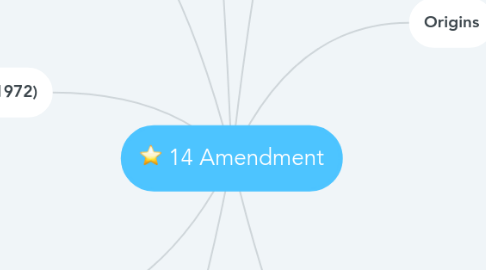
1. Civil rights act
1.1. The Civil Rights Act of 1957 aimed to change voting rights and allowing the government to prosecute anyone who tried to prevent or limit voting rights
1.2. Birmingham, Alabama, became a focal point of the civil rights movement when Dr. Martin Luther King Jr. and other activists led nonviolent protests
1.3. The Civil Rights Act of 1964 outlawed not only racial discrimination, but discrimination based on religion, sex, and national origin.
2. Indian education act (1972)
2.1. The Indian Education Act of 1972 aimed in improving education for Native Americans.
2.2. The act provided money and services to Native American schools
2.3. Native Americans born on reservations were living in separate sovereign territory and were not citizens of the United States.
3. Brown v. Board of Education
3.1. In 1954 the Supreme Court Decided the Case of brown v. Board of Education
3.2. Supreme Court had a second decision about integration To end segregation and allow all Colord students to attend school together
3.3. The defense argued that racial segregation in public schools violated the Fourteenth Amendment therefore it was illegal to the 14 Amendment
4. Americans with disabilities Act 1990
4.1. In 1975, Congress passed the individual with disabilities law that would be a Act (IDEA) to expand education opportunities for students with disabilities.
4.2. This act allowed students with disabilities to attend schools that best match their specific needs.
5. Same sex marriage
5.1. In July 2015, the Supreme Court ruled the case of Obergefell v. Hodges that state laws banning same-sex marriage were against the law
5.2. Before the the case of Obergefell v Hodges's some states allowed same-sex marriages while others made them illegal
5.3. The ruling was based on the equal protection of the Fourteenth Amendment and stated that the right to marry deserves equal protection.
5.4. The ruling was based on the equal protection clause of the Fourteenth Amendment and stated that the right to marry deserves equal protection.
6. Effect
6.1. Equal protection
6.1.1. The effect in 1868, provides that no state should deny to any person within its jurisdiction the equal protection of the laws.
6.2. Equal pay
6.2.1. A United States labor law amending the fair labor standards act
6.2.1.1. This aimed at abolishing wage disparity based on sex
7. Origins
7.1. Black codes
7.1.1. Black codes Passed in 1865 and 1866, these laws limited the rights of freed African Americans
7.1.2. Other black codes prevented African Americans from testifying in court or serving on a jury.
7.1.3. some black codes prevented formerly enslaved people from marrying
7.2. Plessy vs Ferguson
7.2.1. In 1896, the Supreme Court decided the case Plessy v. Ferguson.
7.2.2. Plessy argued that having separate cars violated the Fourteenth Amendment
7.2.3. The Supreme Court disagreed, saying that it was legal to have separate facilities as long as they were equal in quality.
7.3. Dred Scott
7.3.1. Dred Scott was an enslaved African American who lived with his owner in the slave state of Missouri.
7.3.2. Dred Scott wanted to sue his own freedom but couldn't becauseThe Supreme Court ruled that because Dred Scott was the descendent of an enslaved African, he was not a citizen and he had no legal right to sue.

